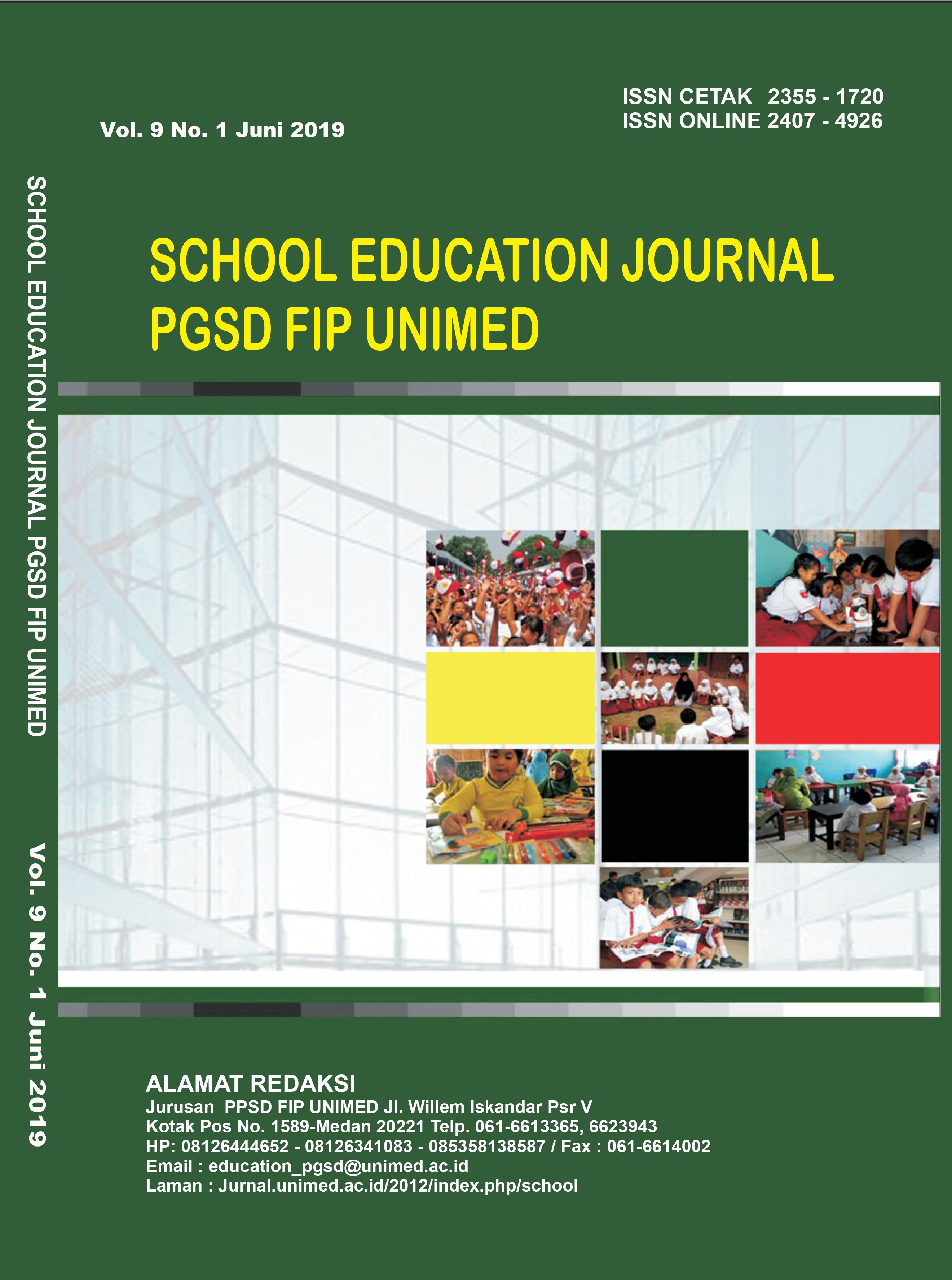IMPLEMENTASI MODEL PEMBELAJARAN KOOPERATIF TIPE STAD PADA POKOK BAHASAN STRUKTUR ATOM DI KELAS X SMA NEGERI 1 SIBABANGUN
DOI:
https://doi.org/10.24114/sejpgsd.v9i1.13684Abstract
The purpose of this study is to determine whether STAD type cooperative learning is better than conventional learning models in improving student chemistry learning outcomes on the subject of atomic structure in class X SMA 1 Sibabangun. This research is an experimental research. The population in this study was all students of class X SMA 1 Sibabangun consisting of 3 classes. The research sample was selected 2 classes randomly, namely class X-1 as the experimental class using cooperative learning type STAD and class X-2 as the learning control class using conventional learning. From the data analysis for the experimental class, pre-tests (20.65 ± 6.47) and post-tests (90.8 ± 7.35) were obtained. In the control class, pre-tests (34.60 ± 8.45) and post-tests were obtained (70.55 ± 10.37). The results of testing the hypothesis by using the one-party t test at = 0.05 and dk = 62 obtained tcount>ttable or 4.425> 2.034 then Ha is accepted, Improving student learning outcomes after being given learning treatment Type STAD is better than conventional learning on the subject structure atom class X SMA Negeri 1 SibabangunKeywords: Implementation, Cooperative Type STAD, Learning OutcomesDownloads
Published
Issue
Section
License
Authors whose manuscripts are approved are approved as follows:
The publication rights for all journal manuscript materials published/published on the SEJ (School Education Journal) E-Journal site are held by the editorial board with the author's knowledge (moral rights remain with the manuscript authors).
The formal legal requirements for accessing this electronic digital journal article are subject to the terms of the Creative Commons Attribution-ShareAlike (CC BY) license, which means that E-Journal SEJ (School Education Journal) has the right to store, transfer media/format, manage in the form of a database, maintain, and publish articles without asking permission from the author as long as the author's name remains as the copyright owner.
Manuscripts published/published electronically are open access for educational, research, and library purposes.

